The semester will consist of concentrated activities, including five mini-courses at graduate level, delivered by: I. Belykh, D. Burago, R. Connelly, L. Deville and M. Newman. The Semester will also include a workshop "Advances in Discrete Networks" in December 12-14, 2014.
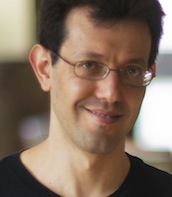 |
OPENING LECTURE Sep 19, 2014 Professor Assaf Naor Princeton University Vertical versus horizontal Poincare inequalities Lecture : Fri 3:30pm, 704 Thackeray Hall |
Sep 25 - Sep 26, 2014 Professor Mark Newman Department of Physics and Center for the Study of Complex Systems University of Michigan Epidemics, Erdos numbers, and the Internet: The form and function of networks Lecture 1 : Th 10am, 104 Lawrence Hall Lecture 2 : Th 3pm, 11 Thaw Hall Lecture 3 : Fri 10am, 104 Lawrence Hall Lecture 4 : Fri 3:30pm, 704 Thackeray Hall |
 |
|---|---|---|---|
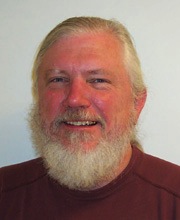 |
Oct 13 - Oct 17, 2014 Professor Robert Connelly Department of Mathematics Cornell University Basic rigidity in three flavors Lecture 1 : Mon 3pm, 107 Lawrence Hall Lecture 2 : Tue 3pm, 106 Allen Hall Lecture 3 : Wed 3pm, G36 Bendum Hall Lecture 4 : Th 3pm, 11 Thaw Hall |
Oct 27 - Oct 28, 2014 Professor Dmitri Burago Department of Mathematics Penn State University Several mathematical stories around discretization in Geometry, Dynamics, and PDEs on manifolds Lecture 1: Mon 10am, Public Health A 522 Lecture 2: Mon 3pm, Public Health A 522 Lecture 3: Tue 10am, Benedum G27 Lecture 4: Tue 3pm, Allen 106 The book: A course in metric geometry |
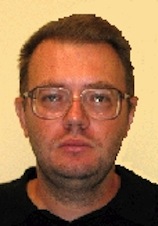 |
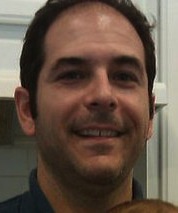 |
Nov 10 - Nov 14, 2014 Professor Lee Deville Department of Mathematics and Illinois Institute for Universal Biology University of Illinois at Urbana-Champaign Dynamical Systems defined on Networks: Symmetry, Stability, and Stochasticity Lecture 1: Mon 3pm, 107 Lawrence Hall Lecture 2: Tue 3pm, 106 Allen Hall Lecture 3: Wed 3pm, G36 Bendum Hall Lecture 4: Th 3pm, 11 Thaw Hall Preparatory material: Paper 1 , Paper 2 |
Dec 8 - Dec 12, 2014 Professor Igor Belykh Department of Mathematics & Statistics Georgia State University Static and evolving dynamical networks: an interplay between the dynamics and graph topology Lecture 1: Mon 3pm, Benedum G30 Lecture 2: Tue 3pm, Benedum G30 Lecture 3: Wed 3pm, Benedum G30 Lecture 4: Th 3pm, Benedum G30 Preparatory material: Paper 1 , Paper 2 Paper 3 , Paper 4 , Paper 5 , Paper 6 |
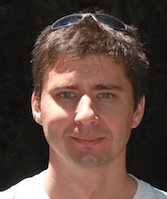 |
|
Funding for the Semester has been provided
by the
Mathematics Research Center at the University of
Pittsburgh .
The organizing committee consists of: Brent Doiron , Bard Ermentrout , Marta Lewicka and Jonathan Rubin . |
Poster: 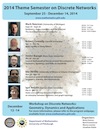
|
|---|
The goal of the Semester is to expose graduate students, visitors and faculty to a variety of research directions involving discrete geometrical structures, networks, and dynamics of such. Recently, there has been a lot of interest in the morphogenesis (shape formation) of semi-rigid structures, particularly low-dimensional ones such as filaments, laminae and their assemblies, which arise routinely in biological systems and their artificial mimics. At the continuum level, differential growth in a body leads to residual strains that result in changes of its shape. Eventually, the growth patterns are expected to be, in turn, regulated by these strains, so that this principle might well be the basis for the physical self-organization of biological tissues. While such questions lie at the interface of biology, chemistry and physics, fundamentally they also have a deeply geometric and analytical character, and may be seen as a variation on a classical theme in differential geometry - that of embedding a shape with a given metric in a space of possibly different dimension. Similar questions can, naturally, also be posed on networks, via the discrete differential geometry approach.
Networks of nodes arise in other contexts where an intrinsic time-evolving activity pattern is associated with each node and communication between nodes influences the patterns that are generated. Biological examples include models of disease spread, in which nodes are members of a susceptible population and the dynamics of each node characterizes the evolution of any disease-related quantities that population member carries, and models of neuronal communication, where the membrane potential and concentrations of various ions associated with each neuron change over time and neurons communicate electrically or chemically based on certain connectivity patterns. In such applications, it is generally of interest to describe the relation between emergent dynamics of a distributed network, such as network-wide patterns of infection or action potential generation in the examples above, and the pattern of connections between network elements.
Finally, in the case of dynamic networks, the connections between dynamic nodes may themselves evolve. Certainly, contact networks of individuals in a society change over time, while at a more microscopic level, cellular networks change their interactions either to achieve a new state or to maintain an existing state (i.e., homeostasis); for example, learning in neural networks occurs through changes in synaptic connectivities or weights, known collectively as synaptic plasticity. The forward and inverse problems become more complicated on such dynamic networks. Here, it is also important to confront control questions, such as how to evolve a network to achieve a desired state, based on evolution laws prescribed by the setting in which the network arises.
Previous Theme Semesters at the University of Pittsburgh: